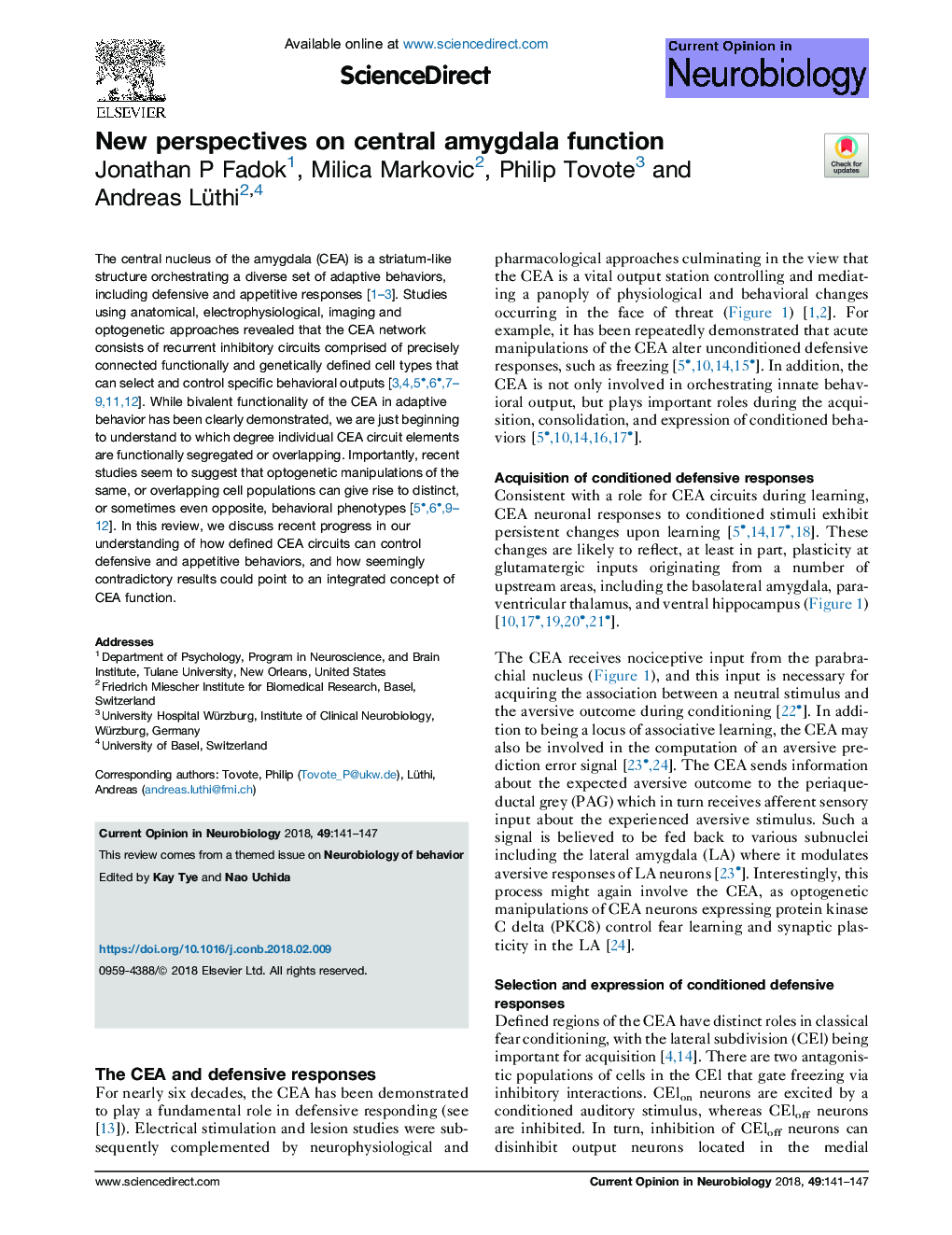| Article ID | Journal | Published Year | Pages | File Type |
|---|---|---|---|---|
| 8840136 | Current Opinion in Neurobiology | 2018 | 7 Pages |
Abstract
The central nucleus of the amygdala (CEA) is a striatum-like structure orchestrating a diverse set of adaptive behaviors, including defensive and appetitive responses [1, 2, 3]. Studies using anatomical, electrophysiological, imaging and optogenetic approaches revealed that the CEA network consists of recurrent inhibitory circuits comprised of precisely connected functionally and genetically defined cell types that can select and control specific behavioral outputs [3, 4, 5
- , 6
- , 7, 8
- , 9, 12]. While bivalent functionality of the CEA in adaptive behavior has been clearly demonstrated, we are just beginning to understand to which degree individual CEA circuit elements are functionally segregated or overlapping. Importantly, recent studies seem to suggest that optogenetic manipulations of the same, or overlapping cell populations can give rise to distinct, or sometimes even opposite, behavioral phenotypes [5
- , 6
- , 9, 10, 11
- , 12]. In this review, we discuss recent progress in our understanding of how defined CEA circuits can control defensive and appetitive behaviors, and how seemingly contradictory results could point to an integrated concept of CEA function.
- , 6
- , 7, 8
- , 9, 12]. While bivalent functionality of the CEA in adaptive behavior has been clearly demonstrated, we are just beginning to understand to which degree individual CEA circuit elements are functionally segregated or overlapping. Importantly, recent studies seem to suggest that optogenetic manipulations of the same, or overlapping cell populations can give rise to distinct, or sometimes even opposite, behavioral phenotypes [5
- , 6
- , 9, 10, 11
- , 12]. In this review, we discuss recent progress in our understanding of how defined CEA circuits can control defensive and appetitive behaviors, and how seemingly contradictory results could point to an integrated concept of CEA function.
Related Topics
Life Sciences
Neuroscience
Neuroscience (General)
Authors
Jonathan P Fadok, Milica Markovic, Philip Tovote, Andreas Lüthi,
